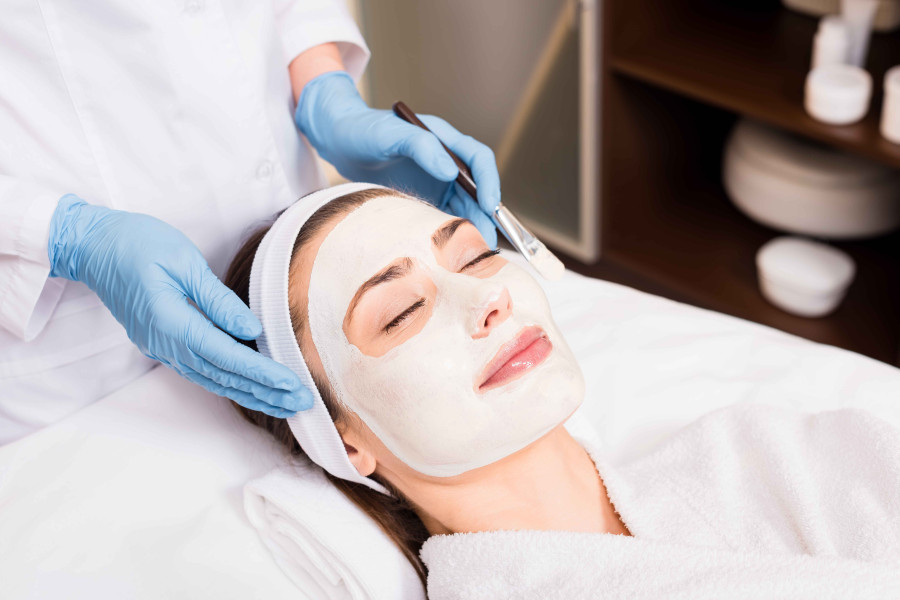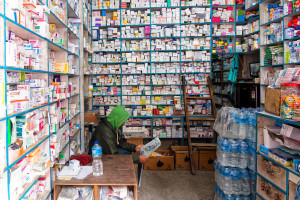Culture & Lifestyle
The perks of chemical peeling
Dermatologist Uma Keyal explains the procedure: its steps, benefits and intended outcomes.
Rukusha Giri
As the largest sense organ in our body, the skin encounters various problems. Some of these skin troubles can be easily fixed through small adjustments to our lifestyle, while others take a lot longer to heal.
If the skin issue seems severe or doesn’t naturally go away in a few weeks time, it is best to consult a dermatologist. Although many people don’t view skin problems as a big problem that needs to be consulted with a doctor, they can lead to serious health issues. Depending on the circumstance, dermatologists either give us medicine for our problem or suggest a more elaborate chemical procedure.
The idea that chemicals are always bad for our skin is widespread. However, when done by certified dermatologists, chemical treatments can have excellent results.
In this interview with the Post, Dr Uma Keyal, a dermatologist and aesthetician with expertise in treating skin, hair, nail conditions and STIs, gives us insights on chemical peeling, including its steps, benefits, limitations, and potential outcomes.

What is a chemical peel?
A chemical peel is an aesthetic technique that uses a chemical solution to peel off the outermost layer of skin and exfoliate the dead cells off. It is also known as chemical exfoliation and medipeel.
Although a popular treatment that leads to good skin, you should only get a chemical peeling done by professionals. If done incorrectly, this could worsen your skin's condition.
Chemical peeling can be done in many ways. While it can be done on all skin types, certain areas like the thighs and chest can be more challenging to treat. Typically, chemical peels are done on the face, knees, elbows, and back due to specific skin issues like hyperpigmentation or breakouts.
They are divided into three categories based on their strength: light, medium, and dark. A light chemical peel involves using AHA in 20-30 percent concentrations for a general facial. A medium chemical peel with TCA in 35-50 percent acid concentration is used to treat acne. These two are most commonly used. Dermatologists warn against using phenol peels (dark chemical peels) on patients whose skin is already on the healthier side because it could potentially worsen their skin.
The peeling process
Chemical peeling is a multi-step process that involves analysing the individual’s skin type and condition and then basing the techniques and chemicals to be used. Two types of acids, alpha-hydroxy acid (AHA) and beta-hydroxy acid (BHA), are commonly used in this process. AHA and BHA products are known for reducing fine lines and wrinkles, improving the texture and tone of the skin, cleaning pores, and enhancing the overall condition. These acids are safe to use as they suit almost everybody’s skin type.
Although our everyday skin care products also have these acids, they are found in higher concentrations in a chemical peel. They are sourced from fruits like apples, grapes, milk, sugarcane, and lemons. Salicylic acid is used in BHA, whereas AHA uses glycolic, mandelic, citric, and lactic acid. Salicylic acid-based BHA peels are used on oily acne-prone skin, and glycolic acid AHA peels on skin with dark spots or hyperpigmentation.
Before starting the procedure, we test the patient’s skin to see if we should proceed with a regular chemical or a TCA (trichloroacetic acid peel) peel. TCA peels efficiently treat skin with sun damage, acne scarring, hyperpigmentation and open sores. We generally recommend one chemical peeling session per month.
Why do a chemical peel?
This aesthetic treatment has numerous benefits, including eliminating numerous skin issues like acne, liver spots, age spots, sun spots, uneven skin tones, fine lines around the mouth and under the eyes, wrinkles caused by ageing, genetics, sun damage and light scarring.
After peeling skincare
Since each skin type is unique and requires a different acid concentration, chemical peeling should only be performed after consulting a dermatologist and using the appropriate acid concentration. However, people must adhere to a skincare regimen to achieve the desired peeling without adverse side effects. A brief skin reaction may occur after peeling, but the patient shouldn't go outside in the sun immediately. You can ask the clinic for a cooling device; sunscreen and moisturiser are best used right after peeling. Everyday skincare should be practised, but physical scrubs must be avoided before and after chemical peeling.




 10.12°C Kathmandu
10.12°C Kathmandu













%20(1).jpg&w=300&height=200)

